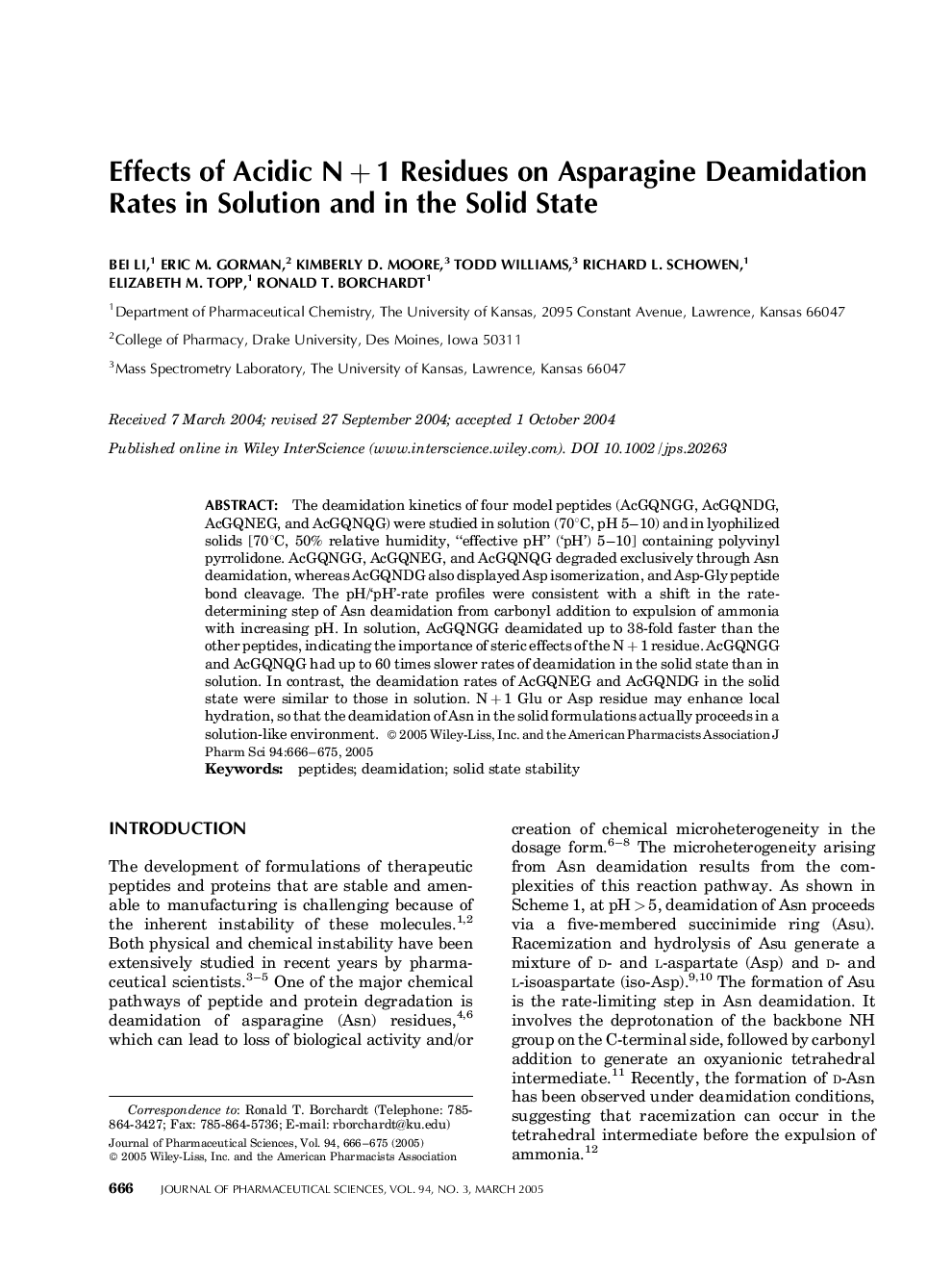| Article ID | Journal | Published Year | Pages | File Type |
|---|---|---|---|---|
| 8994344 | Journal of Pharmaceutical Sciences | 2005 | 10 Pages |
Abstract
The deamidation kinetics of four model peptides (AcGQNGG, AcGQNDG, AcGQNEG, and AcGQNQG) were studied in solution (70°C, pH 5-10) and in lyophilized solids [70°C, 50% relative humidity, “effective pH” ('pH') 5-10] containing polyvinyl pyrrolidone. AcGQNGG, AcGQNEG, and AcGQNQG degraded exclusively through Asn deamidation, whereas AcGQNDG also displayed Asp isomerization, and AspâGly peptide bond cleavage. The pH/'pH'ârate profiles were consistent with a shift in the rateâdetermining step of Asn deamidation from carbonyl addition to expulsion of ammonia with increasing pH. In solution, AcGQNGG deamidated up to 38âfold faster than the other peptides, indicating the importance of steric effects of the Nâ+â1 residue. AcGQNGG and AcGQNQG had up to 60 times slower rates of deamidation in the solid state than in solution. In contrast, the deamidation rates of AcGQNEG and AcGQNDG in the solid state were similar to those in solution. Nâ+â1 Glu or Asp residue may enhance local hydration, so that the deamidation of Asn in the solid formulations actually proceeds in a solutionâlike environment. © 2005 WileyâLiss, Inc. and the American Pharmacists Association J Pharm Sci 94:666-675, 2005
Related Topics
Health Sciences
Pharmacology, Toxicology and Pharmaceutical Science
Drug Discovery
Authors
B.e.i. Li, Eric M. Gorman, Kimberly D. Moore, Todd Williams, Richard L. Schowen, Elizabeth M. Topp, Ronald T. Borchardt,
